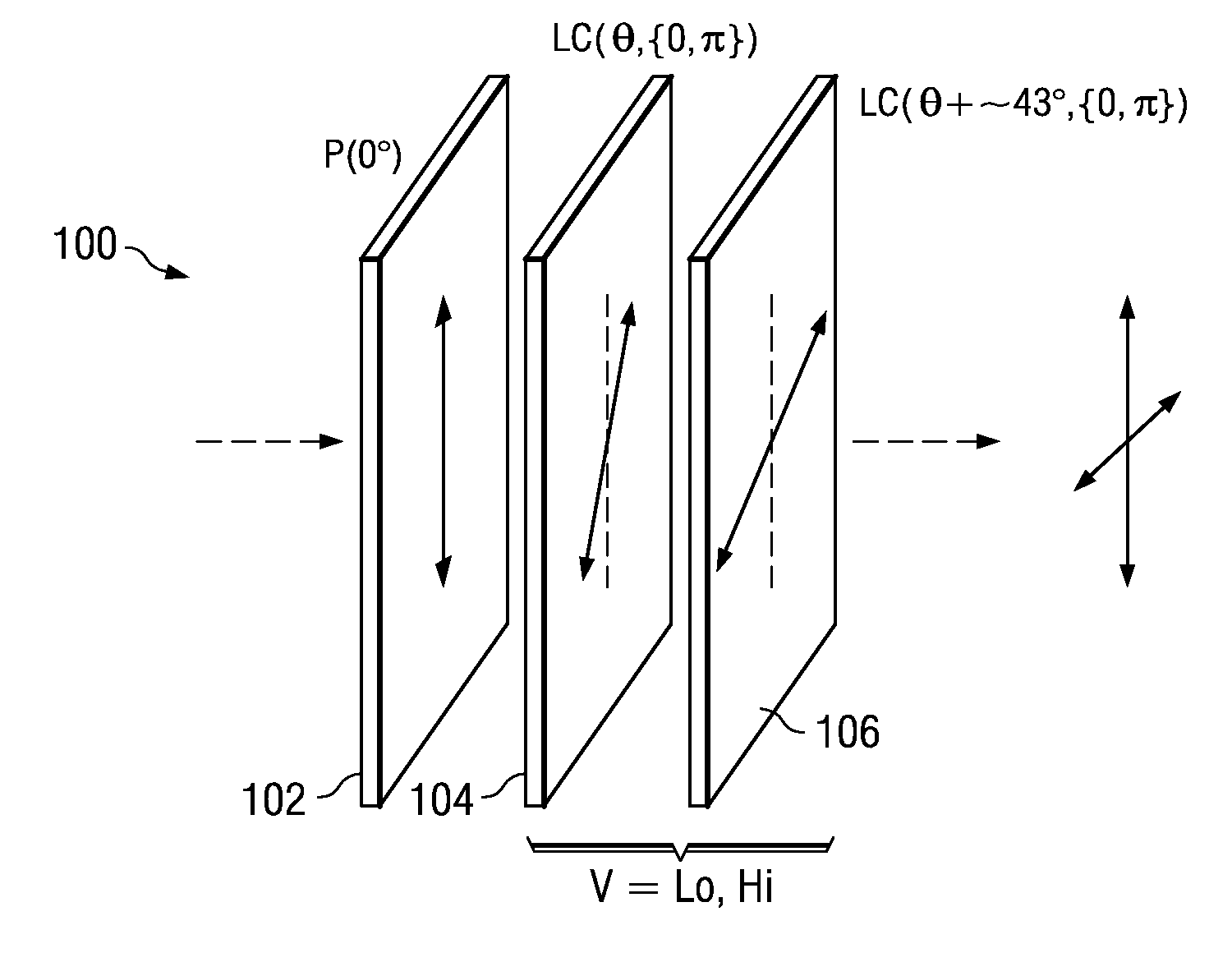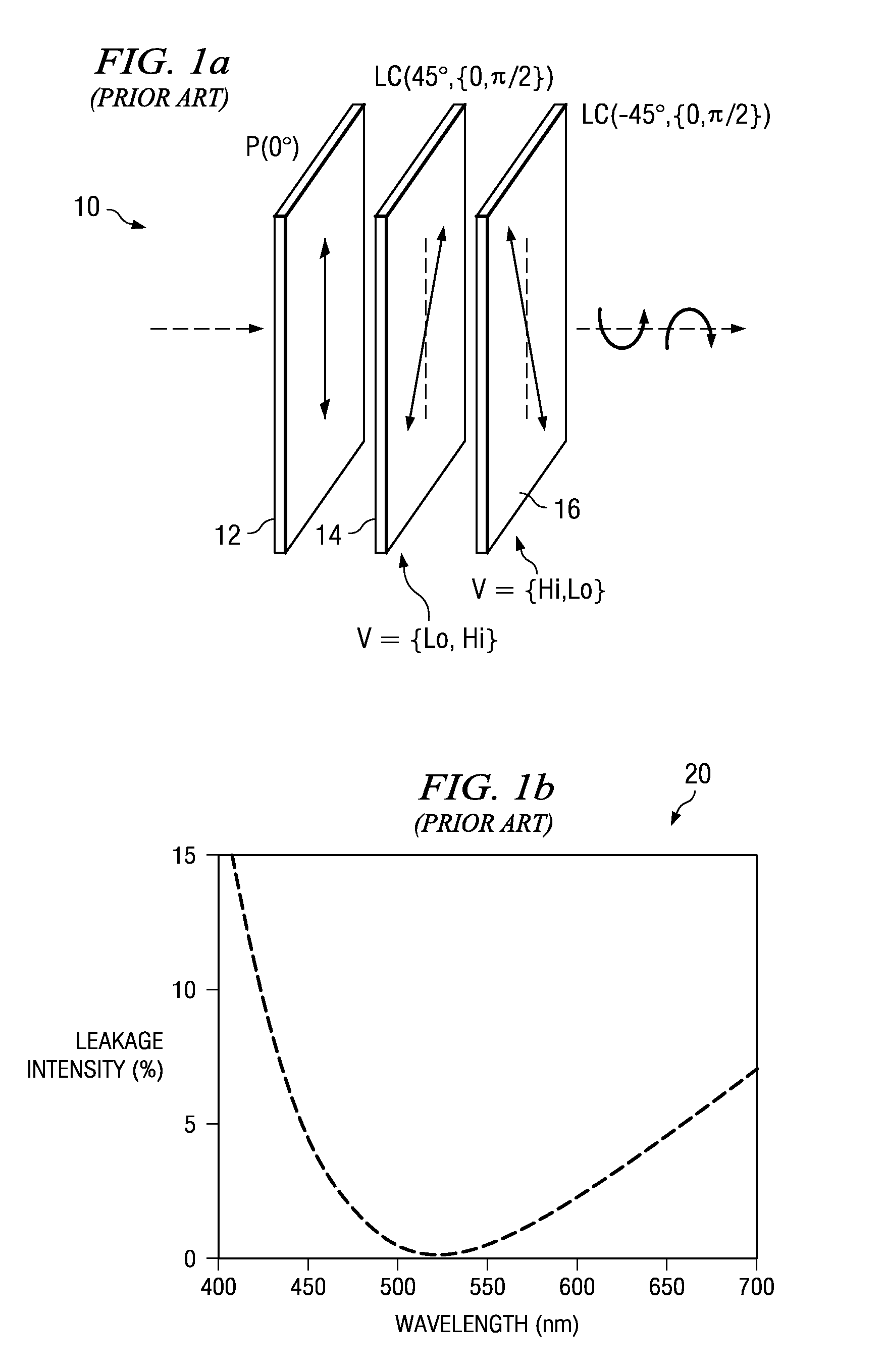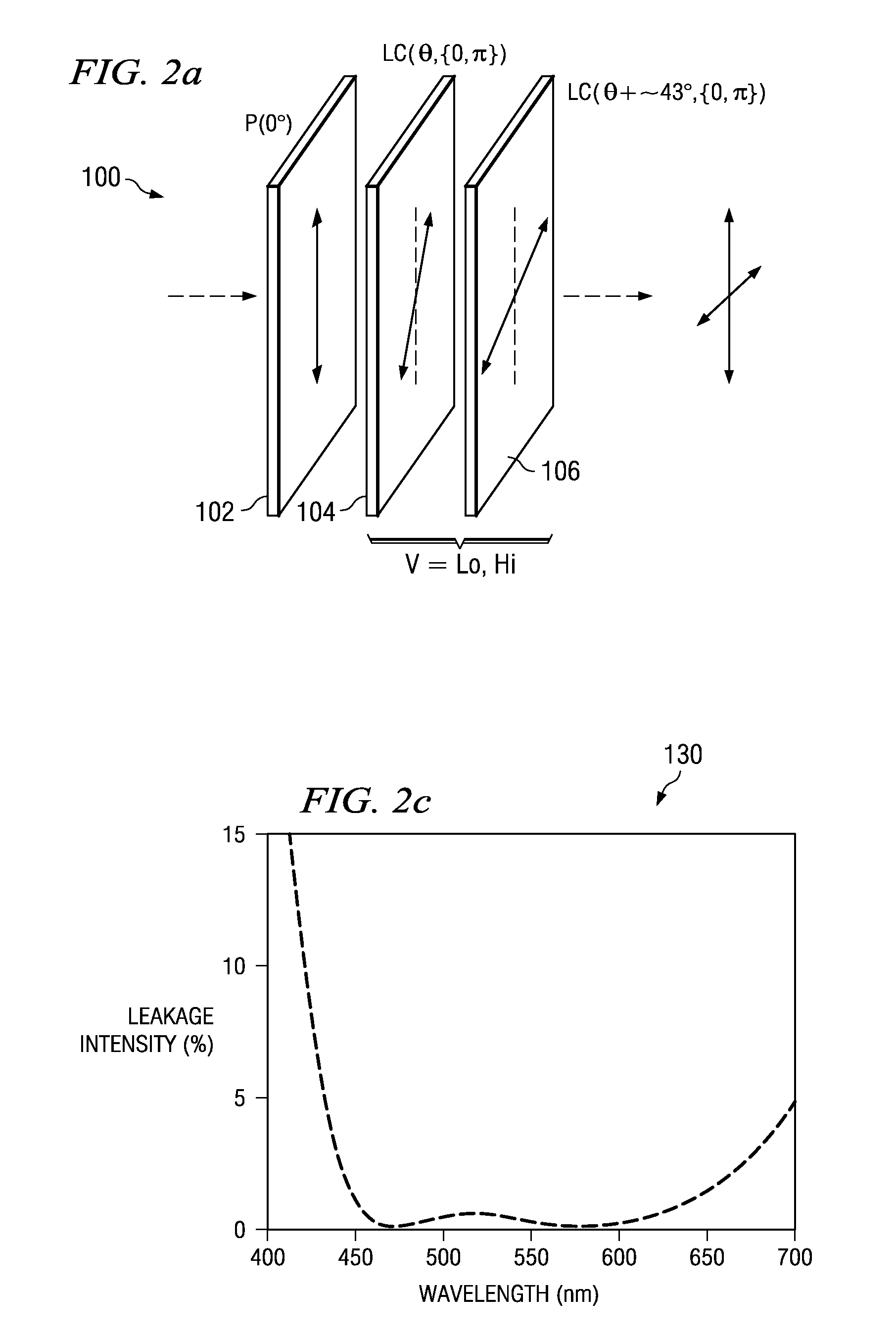Achromatic Polarization Switches
a technology of achromatic polarization and switches, applied in the field of achromatic polarization switches, can solve the problems of high hardware cost, crude image formation, and added cost to the presentation relative to a linear polarized system
- Summary
- Abstract
- Description
- Claims
- Application Information
AI Technical Summary
Benefits of technology
Problems solved by technology
Method used
Image
Examples
fourth embodiment
[0054]FIG. 6 illustrates an APS 600. This exemplary embodiment of APS 600 includes compensation elements, where θ=8°. APS 600 includes an input polarizer 602, first retarder stack 603, first LC pi-cell 610, second retarder stack 611, second LC pi-cell 622, and third retarder stack 623.
[0055] In this fourth embodiment, a first retarder stack 603 is located on an optical path between input polarizer 602 and first LC pi-cell 610, and includes biaxial retarder 604 with R(8°, λ / 2), uniaxial retarder 606 with R(38.5°, Δnd / 2), and uniaxial retarder 608 with R(128.5°, Δnd / 2). Second retarder stack 611 is located on an optical path between first LC pi-cell 610 and second LC pi-cell 622, and includes uniaxial retarder 612 with R(128.5°, Δnd / 2+ΔΓ), uniaxial retarder 614 with R(38.5°, Δnd / 2), biaxial retarder 616 with R(−74°, λ / 2), uniaxial retarder 618 with R(38.5°, Δnd / 2), and uniaxial retarder 620 with R(128.5°, Δnd / 2+ΔΓ). Third retarder stack 623 is located on an optical path after second L...
fifth embodiment
[0063] In-plane switching of a half wave retarder can provide achromatic properties as it can be considered equivalent to two ZTN cells oriented at the in-plane switching angle with respect to each other. Solutions have already been discussed in commonly assigned U.S. Pat. No. 6,046,786 issued Apr. 4, 2000 (Sharp et al.). In situations where symmetric behavior is desired, various embodiments exist that minimize the average leakage over the visible spectrum for the two blocking states. For example, FIG. 7a illustrates an APS 700, providing symmetry between output polarization states, thereby aligning the in-plane LC switches optic axes symmetrically either side of the axis bisecting the desired output linear polarization axes. Accordingly, the input polarization state may then be transformed between elliptical states whose major axis is also along this bisecting axis.
[0064] In this exemplary embodiment, APS 700 includes a linear polarizer 702, an input retarder 704, and an in-plane s...
PUM
 Login to View More
Login to View More Abstract
Description
Claims
Application Information
 Login to View More
Login to View More - R&D
- Intellectual Property
- Life Sciences
- Materials
- Tech Scout
- Unparalleled Data Quality
- Higher Quality Content
- 60% Fewer Hallucinations
Browse by: Latest US Patents, China's latest patents, Technical Efficacy Thesaurus, Application Domain, Technology Topic, Popular Technical Reports.
© 2025 PatSnap. All rights reserved.Legal|Privacy policy|Modern Slavery Act Transparency Statement|Sitemap|About US| Contact US: help@patsnap.com



